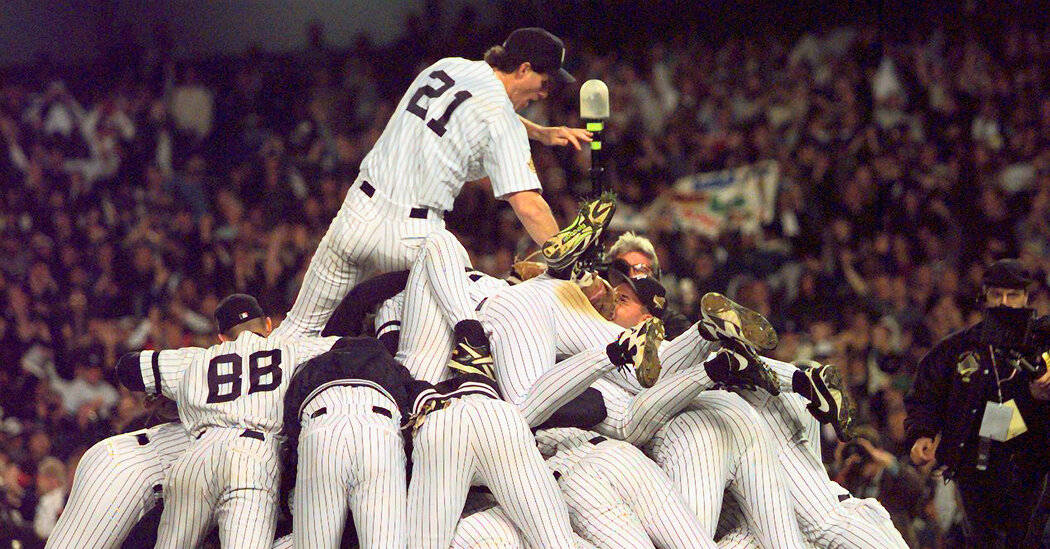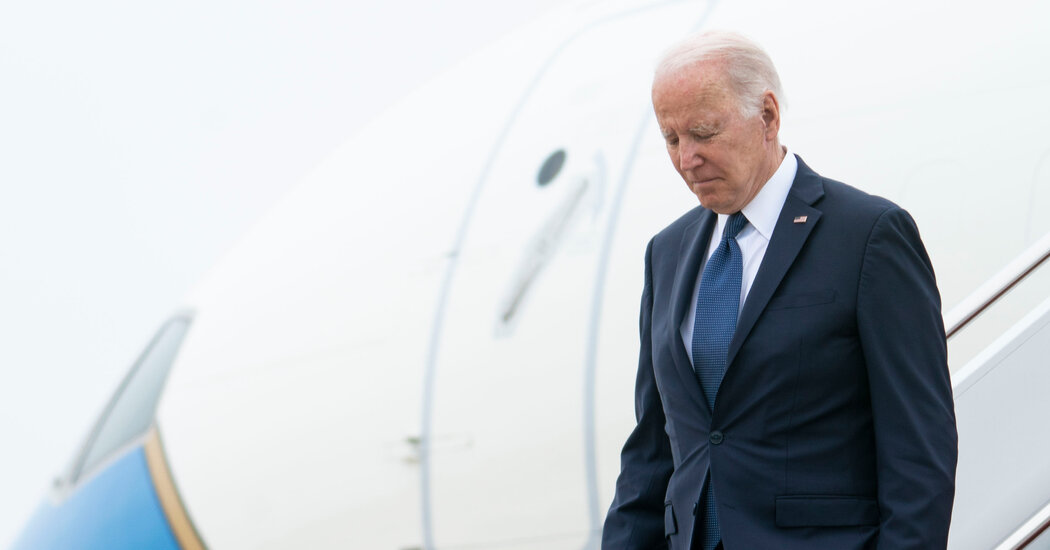
For Morgan Ensberg, damage control started when he saw his uniform number at spring training in 2008. It was 21, the number worn by Paul O’Neill for nine sterling seasons in pinstripes, and after six years out of circulation, the Yankees had decided to quietly reintroduce it. Big mistake, Ensberg thought.
He begged the Yankees’ clubhouse manager to give him a new number when the season started. He offered $5,000 to buy a different number from his teammate Wilson Betemit. He even apologized to O’Neill, who insisted he did not mind. But Ensberg knew he would never win over the masses.
“The fans made it very clear, even during spring training: ‘That’s Paul’s number!’” Ensberg, who is now a manager in the Tampa Bay farm system, said by phone on Wednesday. “I was like: ‘I know, it’s just spring training, I’ve already talked to the clubbie, we’re good.’ You have certain people, it doesn’t really matter that they’re not in the Baseball Hall of Fame, they’ve done so much and they’re such an example of that team, you don’t want to touch that stuff.”
The Yankees announced on Tuesday that they would retire O’Neill’s number in a ceremony on Aug. 21. But the fans had retired it long ago, hounding reliever LaTroy Hawkins until he gave it up shortly after Ensberg dropped it in 2008. Tuesday’s announcement was a much-delayed statement of the obvious.
“I’ve heard that a big reason for this was the backing of the fans, and if that’s true, all I can do is be thankful,” O’Neill said during a video conference call on Wednesday. “I always have been thankful to the New York fans. They’ve treated me unbelievable, both as a player and up in the booth calling games.”
With the Yankees’ announcement, O’Neill leaves a more exclusive — but less celebrated — group than the one he has now joined: a secret society of standouts whose uniform numbers are out of circulation, yet not retired.
In some cases, the numbers seem destined to be retired eventually, such as No. 5 for the Mets (David Wright) and the St. Louis Cardinals (Albert Pujols), No. 15 for the Los Angeles Angels (Tim Salmon) and perhaps No. 3 for the Tampa Bay Rays (Evan Longoria).
But there are several that have been out of use for decades or more, a quirk that Josh Hader, the All-Star closer, encountered when he joined the majors with Milwaukee in 2017. Hader grew up near Baltimore and hoped to wear No. 17, like his favorite player, the Orioles’ B.J. Surhoff. That number was technically available with the Brewers, but the team had not issued it since Jim Gantner, a longtime infielder, last used it in 1992.
M.L.B. Off-Season Updates
“It’s like a retired number that’s not retired, so I just said 17 backward is 71, and I just rolled with it,” Hader said a few years ago.
The Brewers do have five retired numbers, but all are for Hall of Famers: the former owner Bud Selig (1), Paul Molitor (4), Robin Yount (19), Rollie Fingers (34) and Hank Aaron (44). Gantner never made an All-Star team but has strong local appeal: A native of Fond du Lac, Wis., about 70 miles northwest of Milwaukee, he played his entire 17-year career with the Brewers and helped them reach their only World Series, in 1982.
Here are a few players who have lingered for years — or even decades — in the middle ground O’Neill has escaped:
Fernando Valenzuela
No. 34, Los Angeles Dodgers
From his spellbinding 1981 rookie season through 1986, Valenzuela went 97-68 and led the majors in strikeouts, innings and earned run average (minimum 100 starts). He was never quite the same after that — except for a 1990 no-hitter, when Vin Scully told viewers, “If you have a sombrero, throw it to the sky!” — but as the team’s first Mexican superstar, his role in broadening the Dodgers’ appeal still resonates.
Jay Buhner
No. 19, Seattle Mariners
Buhner teamed with Ken Griffey Jr. and Edgar Martinez in a punishing middle of the order for the 1995 team that saved baseball in Seattle. He never left the Mariners after his infamous trade from the Yankees for Ken Phelps in 1988, and he hit his final career home run in the Bronx in the 2001 playoffs.
Roger Clemens
No. 21, Boston Red Sox
Clemens has a complicated legacy in Boston, but he’s been welcomed back warmly in recent years, much like Wade Boggs, who also joined the Yankees later in his career and had his number retired in 2016. The Red Sox inducted Clemens into their Hall of Fame in 2012 and have not given out his number since letting him leave as a free agent after the 1996 season.
Cal Ripken Sr.
No. 7, Baltimore Orioles
When the Orioles fired Ripken Sr. as manager in 1988, just six games into their season-opening streak of 21 losses, his son Billy took his dad’s No. 7 for the remainder of that year. No Orioles player has worn it since. (The No. 7 is prominently displayed next to a notorious bat handle on Ripken’s 1989 Fleer baseball card.) The team also does not issue No. 44, which was worn by the former player and coach Elrod Hendricks, and it stopped giving out No. 46 after the death of Mike Flanagan, the former pitcher and team executive, in 2011.
Gary Carter
No. 8, Mets
The Mets bungled this one badly. After releasing Carter in 1989, they issued No. 8 to Dave Gallagher, Carlos Baerga and Desi Relaford through 2001. They haven’t given it out since, yet they have inexplicably never retired it for Carter, a Hall of Famer who died in 2012. The Montreal Expos did retire Carter’s No. 8 (and No. 10 for Andre Dawson and Rusty Staub), but the franchise unretired those numbers when it started over as the Washington Nationals.
Charley Lau
No. 6, Chicago White Sox
Lau, an influential hitting coach, died of cancer at age 50 in 1984, and his number has been out of use since another coach, Walt Hriniak, wore it as a tribute in the 1990s. Ozzie Guillen’s No. 13 has also been out of circulation since his last game as manager in 2011. This is unusual for the White Sox, who typically waste no time retiring numbers. In 1989, they retired Harold Baines’s No. 3 just weeks after trading him to Texas. Baines would return several times to the White Sox as a player and a coach — and he always got his old number back.
Dan Quisenberry and Mike Sweeney
No. 29, Kansas City Royals
Quisenberry, a submarining closer with a world-class wit, won five Rolaids Relief Man awards for the Royals in the 1980s. They kept his number in use and eventually gave it to Sweeney, a slugging first baseman who made five All-Star teams in the 2000s. No one has worn it since.
Darryl Kile
No. 57, Houston Astros, Colorado Rockies, St. Louis Cardinals
Kile, a durable and well-liked starter, was just 33 when he died of a heart attack during a Cardinals road trip to Chicago in 2002. It was the first death of an active player during the regular season since Thurman Munson’s plane crash in 1979. None of Kile’s three teams has issued No. 57 since, and all of their ballparks still display a memorial circle with “DK 57.”
The numbers of others who have died in the middle of a season — including Nick Adenhart (No. 34) and Tyler Skaggs (No. 45) of the Angels and Jose Fernandez (No. 16) of the Miami Marlins — have also remained out of use, though Noah Syndergaard will wear No. 34 for the Angels this season with the blessing of the Adenhart family. (Thanks to Ed Pearsall on Twitter for the tip.)
Coming Soon
Expect a few future ceremonies for the Boston Red Sox, the Philadelphia Phillies and the San Francisco Giants to celebrate their success in the 2000s. All of the following numbers have been shelved since the last time these people wore them: for Boston, No. 15 (Dustin Pedroia), No. 33 (Jason Varitek) and No. 49 (Tim Wakefield); for Philadelphia, No. 6 (Ryan Howard), No. 11 (Jimmy Rollins), No. 26 (Chase Utley) and No. 35 (Cole Hamels); and for San Francisco, No. 15 (Bruce Bochy) and No. 55 (Tim Lincecum).
And, of course, it’s a safe bet that no Giants player will ever again wear 28, the number of Buster Posey, the three-time World Series champion catcher who retired in November.




